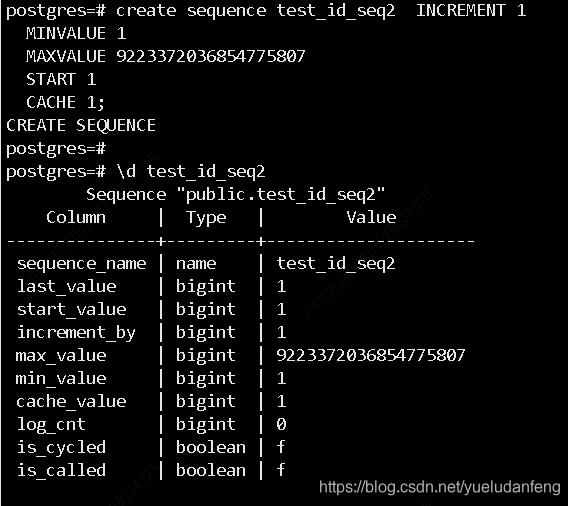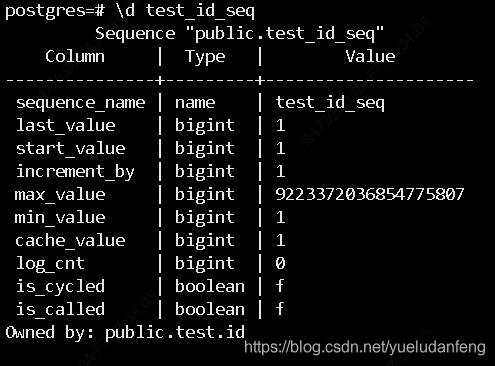PostgreSQL 序列綁定字段與不綁定字段的區別說明
序列綁定字段與不綁定字段的區別
綁定字段
構造數據
drop sequence if exists test_id_seq;
create sequence test_id_seq;
drop table if exists test;
create table test(id int default nextval('test_id_seq'), name text);
alter sequence test_id_seq owned by test.id;
測試
test=# drop table test; DROP TABLE test=# \d Did not find any relations. test=#
不綁定字段
構造數據
drop sequence if exists test_id_seq;
create sequence test_id_seq;
drop table if exists test;
create table test(id int default nextval('test_id_seq'), name text);
測試
test=# drop table test;
DROP TABLE
test=# \d
List of relations
Schema | Name | Type | Owner
--------+-------------+----------+----------
public | test_id_seq | sequence | postgres
(1 row)
test=#
總結
序列綁定字段,則刪除表的時候,序列會被一並刪除
序列不綁定字段,則序列與表是獨立的,刪除表不會將序列一並刪除
補充:PG表中字段使用序列類型以及綁定序列實例
兩種方法效果是一樣的
直接看代碼







以上為個人經驗,希望能給大傢一個參考,也希望大傢多多支持WalkonNet。如有錯誤或未考慮完全的地方,望不吝賜教。
推薦閱讀:
- postgreSQL數據庫默認用戶postgres常用命令分享
- Postgresql數據庫之創建和修改序列的操作
- postgresql 導入數據庫表並重設自增屬性的操作
- PostgreSQL12.5中分區表的一些操作實例
- Oracle中的序列SEQUENCE詳解